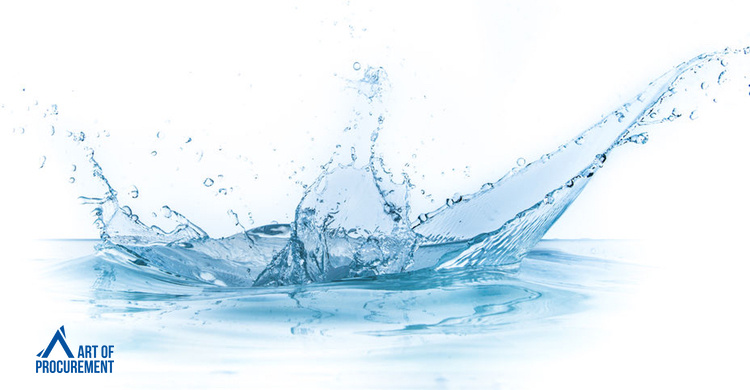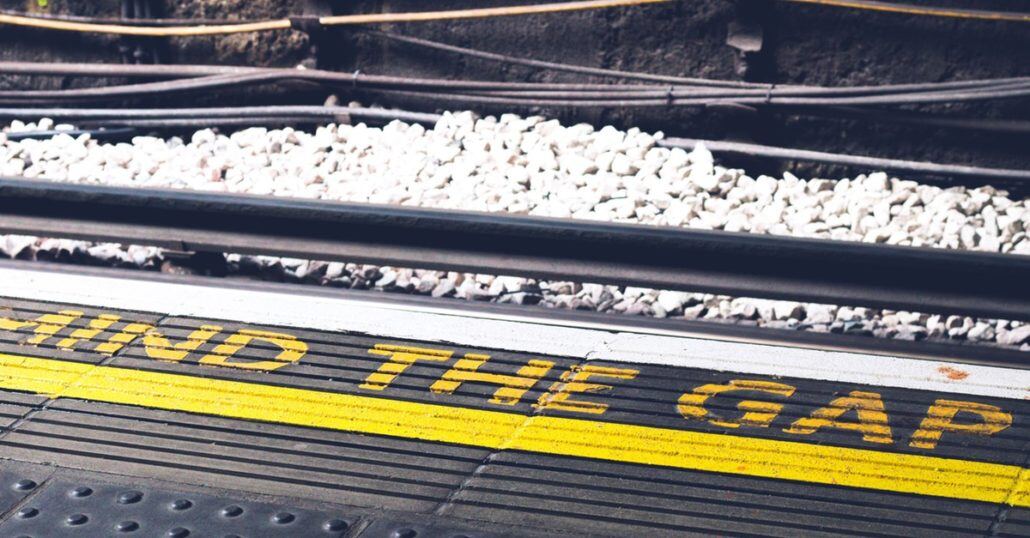
While researching a recent episode of Dial P, I came across material on the difference between Industry 4.0 and 5.0. Truthfully? I didn’t know Industry 5.0 had begun.
The episode spurred some interesting conversations on LinkedIn – so I decided to dig back into industrial progression, starting at Industry 1.0 and considering the evolution of procurement at the same time.
Industry 1.0: 1760 – 1840
Modern industry owes a lot to James Watt and his steam engine. It wasn’t the first steam engine, and it may not have been the best, but it was the first commercially available engine to dominate all other available designs.
Water and steam powered machines completely changed manufacturing and set society on a trajectory that few people could have imagined at the time.
Before Industry 1.0, items were made one at a time by skilled artisans. Goods were expensive and there were less of them available. Most wealth was concentrated among a few people, and it was often tied to land ownership – inherited land ownership.
The birth of industrial manufacturing eliminated the need to possess large tracts of land in order to generate wealth. It also created a large number of low skilled non-agricultural jobs and increased the availability and affordability of a range of goods, improving people’s standard of living. That said, the myopic focus on productivity didn’t create a pleasant employee experience. The hours were long and hard, and working conditions were often unsafe.
Procurement (or purchasing) entered the game during this time as well. Many people point to Charles Babbage’s 1832 book, On the Economy of Machinery and Manufactures, as the official origin of centralized procurement. He called for a “materials man” in the mining sector who would select, purchase, and track goods and services.
It was expensive to shut down and restart machines, so inventory management would have been essential. Babbage recognized that purchasing should be centrally managed in order to ensure a steady supply of raw materials – ideally with steady costs to maximize profits and fuel further growth.
Industry 2.0: 1870 – 1970
Also known as The Technological Revolution, this era of production was concentrated in Britain, Germany, and America – a fact that comes as no surprise given that Industry 2.0 innovation was triggered and accelerated by WWI and WWII.
Electricity made it possible to increase efficiency by running more sophisticated machines with fewer people, and the internal combustion engine made industries such as automobiles, chemicals, and telecommunications possible.
Faster communication, first via the telegraph and later via the telephone, and improved transportation created larger addressable markets for companies to reach. This era in the history of procurement led to greater potential economies of scale. Companies got bigger and increased their investments in automation.
Assembly lines made their debut during Industry 2.0, reducing costs and speeding up production further. Luxuries that had been previously out of reach for most people (like cars) became accessible to the factory workers that produced them.
Procurement got an update as well. Marshall Kirkman’s 1887 book, The Handling of Railway Supplies – Their Purchase and Disposition, detailed procurement’s contributions to the railroad industry. He paid particular attention to the importance of buying goods in developed parts of the country and transporting them south and west.
In 1886, the Pennsylvania Railroad created and named the first procurement team, calling it the ‘Supplying Department.’ Competitive bidding was emphasized and price was usually the deciding factor between suppliers.
I would also suggest that mass production and the assembly line rewarded the importance of measurement as a managerial practice. The cost of materials was managed with more precision and secured procurement’s longevity by establishing efficient cost management as a source of competitive advantage.
Industry 3.0: 1970 – 2010
The transition from Industry 3.0 to 4.0 marked the end of the industrial age and the start of the information age.
ATMs were just being introduced, and yet, in the first decade of Industry 3.0, IBM started using semiconductor chips and the first AI controlled robot was introduced.
The 1980s saw the foundation of the Internet. Computer networks could now communicate with each other directly – a capability that was immediately seized by the government, A.C. Nielsen, and insurance companies.
Industry 3.0 also marks the start of digital procurement. Freemarkets was launched in 1995 and supply management moved online. The company’s founders were from McKinsey and General Electric (notably, GE did not see the benefits of supporting reverse auctions). Ariba and Emptoris were both founded in the late 1990s, as procurement began their transition to strategic sourcing.
Freemarkets was founded the same year that the dot com bubble began to grow… a bust was on the horizon, but procurement would never be the same. Companies had figured out how to create and harness supplier competition. Quality and dependability were brought into the mix as analytical capabilities matured.
The world suddenly found itself in a situation where industry 3.0, 4.0, and 5.0 were all happening in parallel in different factories and locations. Industry 1.0 lasted about one hundred years, as did Industry 2.0. Industry 3.0 was compressed to 40 years, 4.0 to just 9 years. Digital capabilities accelerated the pace of industrial evolution, but not all companies and industries stayed on the same timeline.
Industry 4.0: 2011 – 2020
Industry 4.0 gave us smart machines and storage systems, cloud and cognitive computing, the Internet of Things and big data, and mechanical devices run by computer systems.
It saw another increase in production efficiency, but over emphasized mass standardization, which reduced the customer experience. Procurement may have unwittingly played a role in this negative turn by focusing on quantity rather than quality. Goods production was over standardized and consolidated to the point of homogeneity.
Industry 4.0 enabled many of the things only dreamt of during 3.0, like true product lifecycle management. Information could be put in front of the right people at the right time. Machines started to predict their own failures and arrange for maintenance.
Procurement saw some notable changes too. SAP acquired Ariba in 2012, and IBM acquired Emptoris in 2011. A whole new range of smaller, upstart companies hit the procurement tech scene, rendering the original procurement solutions to enterprise infrastructure status and bringing innovators from other disciplines into the space.
Industry 5.0: 2020 – ?
I found two parallel sources credited with the definition of Industry 5.0. Japan envisioned Society 5.0, where robots would work and live alongside humans. Other sources say Industry 5.0 was coined by the European Commission.
Industry 5.0 is still in a visionary state, but it addresses many of the downsides of 4.0. I suspect that Industry 5.0 might be looked at later on as a correction to 4.0 rather than its own phase of industrial evolution.
That said, Industry 5.0 involves all industries… not just manufacturing. Companies are expected to personalize the consumer experience, making production more value centric. And even the meaning of value is changing… from economic value to societal value, and welfare to wellbeing.
Robotics remains a focus. The world has seen the introduction of smart factories that leverage cognitive computing as well as human minds and hands. Industry 5.0 requires us to own and acknowledge the limitations of automation before we can hope to progress to 6.0 – whatever that will entail.
What’s Next
Covering over 260 years of industrial history makes it easier to see what has changed – and what has not.
Labor productivity and worker satisfaction continue to be major issues. The division of labor via the assembly line is not all that different from co-bots and process automation solutions, especially once you account for the jump from physical production to a service economy.
In fact, while we read about the poor labor conditions in Industry 1.0, people are not necessarily happier (or safer) working alongside robots as we learned in the Digit / Dark Warehouse episode of Dial P.
Factories were not safe places to work in the late 18th – early 19th centuries, and data shows that robotic warehouses are less safe than their human-staffed counterparts today. Will we continue to sacrifice working conditions to improve what consumers can buy?
Another of the issues during Industry 1.0 was the price and availability of machines. Digital has leveled the playing field, making it possible to build a global business from your kitchen if you choose.
Metrics continue to drive us forward while raising the bar. Thinkers like Peter Drucker and W. Edwards Deming catapulted business forward in the transition from Industry 2.0 to 3.0, and we are still benefiting from (and suffering under) the results of their high efficiency genius today.
Like the pandemic and the Great Resignation, objectivity will come with time. Future generations may lump Industry 3.0, 4.0, and 5.0 into one group – while probably mocking the simplicity and clumsiness of our technology.
We should be on the lookout for the next steam engine or semiconductor… the advancement that will lurch us forward into the next phase of human innovation.
Procurement was there at the laying of the railroads and the expansion of factory automation. We helped win WWI and WWII, and we were present at the dawn of the digital age. You can be sure that whatever comes next, we’ll find a way to harness it.





